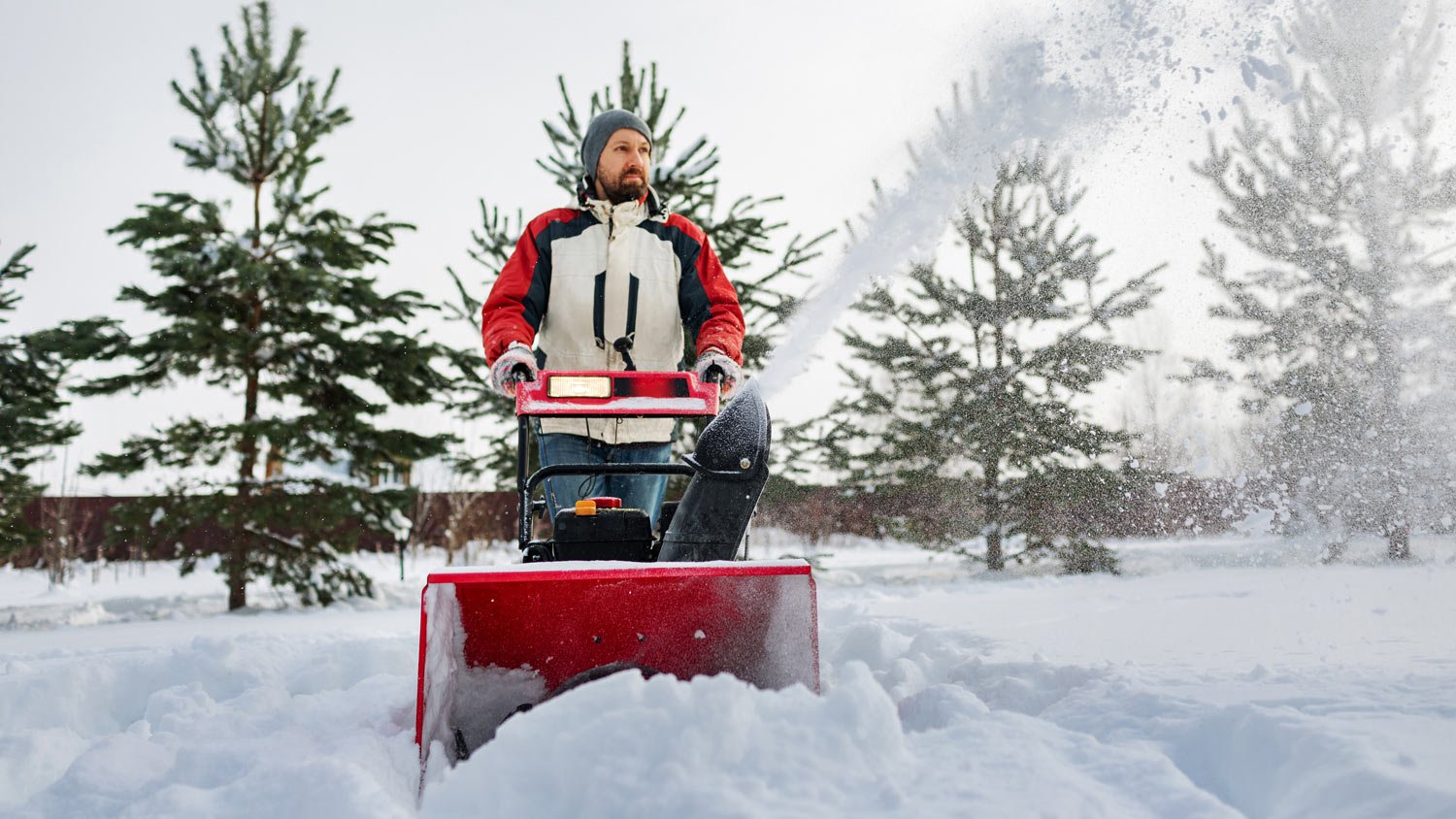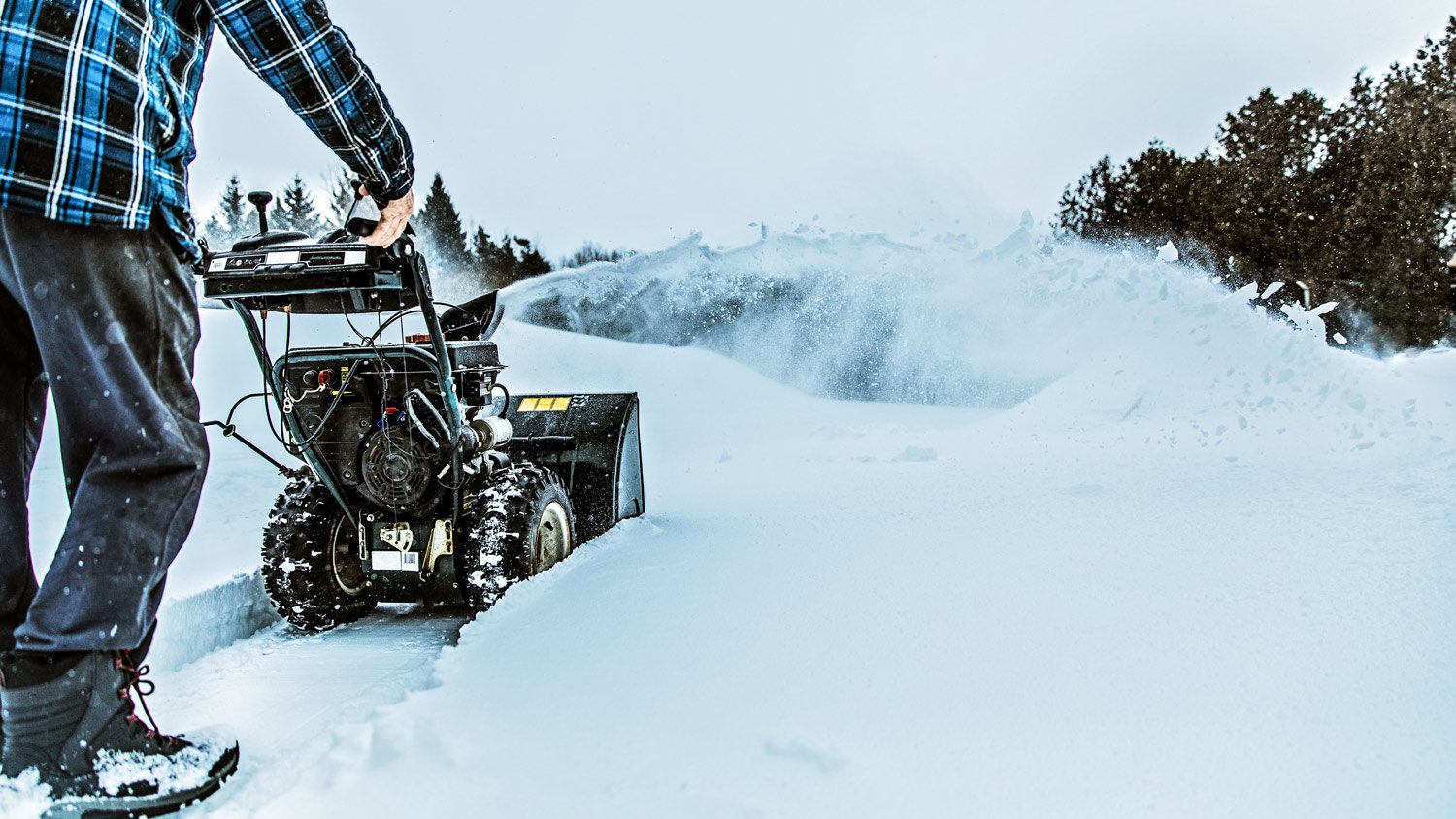Three-Stage vs. Two-Stage Snow Blower: Which Is Better?
Find out which machine is best for your snow removal needs and budget


Three-stage snow blowers are optimal for deeper levels of snow, which two-stage snow blowers may struggle to remove.
Two-stage snow blowers are ideal for cost-conscious homeowners with heavy snowfall.
Both snow blower options offer a variety of options and customizations to choose from.
A three-stage snow blower costs $1,500 to $2,500 or more, and a two-stage snow blower ranges from $800 to $1,500.
Have you decided that it's time to invest in a snow blower? If so, you may be overwhelmed with all the options available, including tree-stage and two-stage snow blowers. This three-stage vs. two-stage snow blower comparison guide will explain the key differences and each machine's pros and cons to help you determine which one is best for you.
Three-Stage vs. Two-Stage Snow Blower: Key Differences

There are a few key differences to consider when comparing a three-stage vs. two-stage snow blower. While both have augers to gather snow and impellers to blow it out, a three-stage blower also has an accelerator, which allows it to handle larger amounts of snow more efficiently. You can clear wet, dense snow much quicker with a three-stage blower, with a greater tossing distance than a two-stage snow blower. A few other differences are auger design, engine size, and price.
Of course, there is always the option to skip buying a snow blower and hire a snow removal service near you. Hiring a snow pro to clear off your driveway or walkway means you can stay inside where it’s cozy, and you won’t have to deal with maintaining and storing the machine either.
What Is a Three-Stage Snow Blower?

A three-stage snow blower is a heavy-duty machine designed to remove heavy snowfall and maneuver through tough terrain. It can also remove ice, making it ideal if you live in an area with harsh winters with heavy snowfall and bitter temperatures.
A three-stage blower has an accelerator in addition to the auger, which allows it to chop and push the snow more efficiently through the impeller. This design makes clearing deep snow from large areas much easier and faster.
| Pros | Cons |
|---|---|
| Efficiently removes deep snow and ice | May require more maintenance |
| Ideal for large residential or commercial properties | Larger size may make it more difficult to maneuver and take up more storage space |
| Clears snow very quickly | More expensive |
Best for:
People who need to clear large areas with deep heavy snow
Individuals who live in climates with harsh winters with large amounts of snowfall and ice
Commercial use for clearing off parking lots
Pros of a Three-Stage Snow Blower
The primary advantage of a three-stage snow blower is its ease of clearing deep, wet snow and ice. When it comes to speed, it outperforms the competition by removing snow twice as fast and throws snow farther than lower-stage snow blowers.
Another advantage is its ability to maneuver through tough terrain, including gravel and uneven surfaces. It is also great for business owners who need to clear parking lots and sidewalks quickly.
Cons of a Three-Stage Snow Blower
While a three-stage snow blower has advantages, there are some significant cons to consider. One of the biggest cons is the steep price tag that comes with this machine. The average cost for a three-stage snow blower ranges between $1,500 and $2,500 or more, and they’re more costly than other types because they are commonly used for commercial use.
It is also bulkier, which can make it more challenging to maneuver, and it takes up much more space than a smaller two-stage blower. So, you’ll need to ensure you have the proper storage space before purchasing this model.
What Is a Two-Stage Snow Blower?

A two-stage snow blower is a heavy-duty machine designed to clear heavy snow from large areas. It can be gas or battery-powered, and can handle snow 16 inches deep, but it’s more effective with 12 inches of snow or less, depending on the model. In comparison, a three-stage snow blower can clear up to 23 inches of snow or more.
The two-stage process consists of the auger cutting and collecting the snow, then feeding it into the impeller and discharging it through a chute. It efficiently removes significant amounts of snow and can be optimal for homeowners who need to clear snow from large areas and driveways.
| Pros | Cons |
|---|---|
| Efficient at clearing heavy, dense snow | Require regular maintenance |
| Easier to manage and maneuver | Removes snow less quickly than a three-stage blower |
| Some models may be more affordable | Less effective at clearing deeper snow |
Best for:
Homeowners who need to remove snow from midsize to large areas
People who live in an area with frequent snowfall
Individuals searching for a snow blower that’s less costly
Pros of a Two-Stage Snow Blower
Just because a two-stage isn’t as quick as its counterpart doesn’t mean it isn’t efficient at removing large amounts of snow. This machine is a prime choice for homeowners with mid-size areas and driveways. Plus, this type of snow removal equipment is easier to maneuver because it is usually smaller than a three-stage blower. Not only that, but some models may be less expensive as well. So, it’s great for those looking to invest in a snow blower on a budget.
Cons of a Two-Stage Snow Blower
Although a three-stage snow blower is more expensive to maintain, a two-stage snow blower still requires regular maintenance. Various parts, such as cables, belts, and spark plugs, will need to be replaced after frequent use.
Another con is that a two-stage model lacks an accelerator, so it removes snow much slower than a three-stage blower. Last but not least, it may not be as efficient for deeper levels of snow.
Three-Stage vs. Two-Stage Snow Blower Comparison Guide
Now that you know the differences and their pros and cons, let’s examine which machine is better based on various features.
Options and Customizations: Tie
Both types of snow blowers offer various options and customizations, such as different clearing widths, engine sizes, self-propelled drive systems, chute control mechanisms, and more. Models also feature different tire sizes, heated hand grips, and power steering. So, you have plenty of features to pick from with either type of machine.
Maintenance: Two-Stage Snow Blower
Even though both models require regular maintenance, a three-stage blower is more expensive to maintain because it has more complex parts, including additional augers, impellers, and a larger engine. A three-stage snow blower may be more time-consuming and cost more to maintain, which is why you may decide to opt for a two-stage blower.
Ease of Use: Two-Stage Snow Blower
Since two-stage blowers are smaller in size they are easier to use and maneuver. Three-stage blowers are more powerful and designed to move larger volumes of snow, making it more difficult to move around smaller areas that need snow removal. So, a two-stage snow blower may be a better choice if you have a mid-sized or smaller area to clear.
Price: Two-Stage Snow Blower
The cost for both types of snow blowers depends on factors such as brand, model, and features you choose. However, a high-end three-stage snow blower can cost $1,500 to $2,500 or more, depending on the type and options it features. A two-stage snow blower ranges from $800 to $1,500.
Frequently Asked Questions
When it comes to deciding whether a two-stage or three-stage snow blower is better, you must consider the amount of snowfall you get, the size of the area, and your budget.
A three-stage snow blower is more efficient at clearing higher volumes of snow quicker and removing ice build-up. It’s ideal for commercial use and removing snow from large areas. Make sure to compare various types of snow removal equipment to ensure you purchase the one that is best for your needs.
Snow can be too heavy for a snow blower and cause clogs in the chute. However, having the correct type of blower for the snow conditions can reduce the chances of it being too heavy for it to handle. Another trick for preventing clogs is to make multiple passes while it snows rather than waiting for it to finish snowing.















